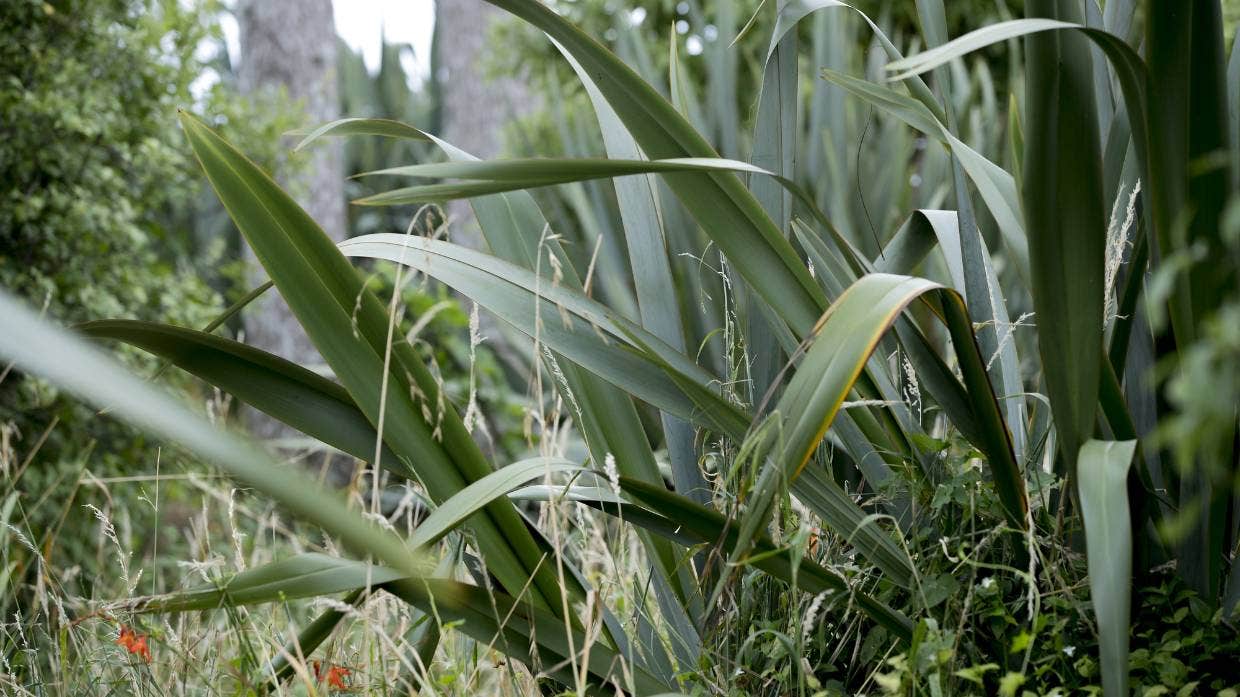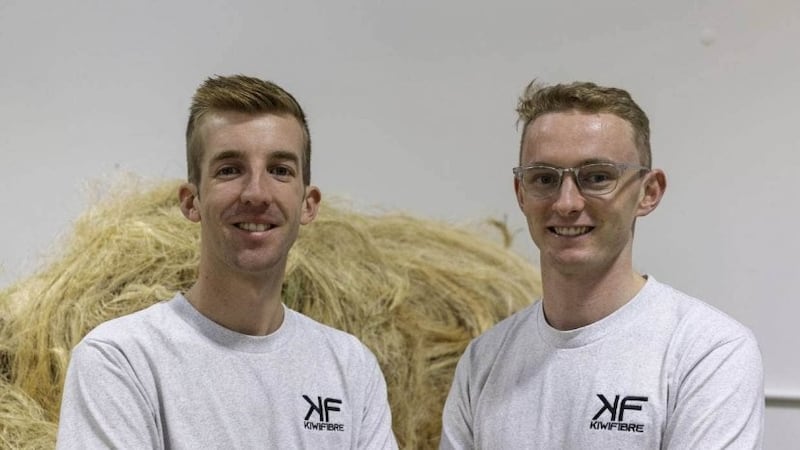KiwiFibre co-founders Ben Scales, left, and William Murrell pose with a mound of harakeke fibre behind them. Photo / Supplied
By Will Harvie, Stuff
Two 23-year-olds have raised $1.5 million to develop harakeke fibre for hi-tech industrial uses.
Ben Scales and William Murrell (Ngāi Tahu) both graduated in December with industrial product design degrees from the University of Canterbury. They’d been working on harakeke (NZ flax) for most of their university years and emerged as the founders of KiwiFibre Innovations Ltd.
Scales said he wrote his last university exam and raised the money in the same week.
“Our harakeke-based composite material, KiwiComp, is a direct swap for fibreglass and carbon fibre in any composite manufacturing method, and is far less CO2 intensive to produce,” he said.
The global carbon fibre market is worth several billion US dollars annually (reports on how many billions vary). It’s used in a broad range of global industries including sport, marine, automotive, and telecommunications.
Those combinations caught the attention of Icehouse Ventures, an Auckland-based venture capital firm that had previously backed companies such as Dawn Aerospace, Ethique and Sharesies. Other investors joined as well.
“We seek to invest in companies that are good at solving big problems … like sustainability,” Icehouse principal Mason Bleakley said.

Harakeke has numerous traditional and hi-tech uses. Monique Ford / Stuff
Harakeke is not botanically a flax, despite the English name. It evolved only on Aotearoa-New Zealand and perhaps Norfolk Island. Before European arrival, it was used by Māori for clothing, mats, baskets, ropes, nets and other products. Its nectar sweetened food and beverages. It also had many medicinal uses.
After European arrival, harakeke harvesting and preparation became a significant industry. The fibres were used in floor coverings, insulation, rope and similar products. Large-scale milling of harakeke peaked during World War I and dwindled thereafter.
But the knowledge was not entirely lost and artisans, many of them Māori, have kept working with the plant.
Scales and Murrell have been tapping into this resource for years and have joined the newly formed He Hononga Ahumahi Harakeke (the Harakeke Industry Alliance) to keep learning.
The alliance among iwi, universities, research institutes, the Department of Conservation and many others aimed to revitalise the harakeke industry, chairperson Mark Henderson (Ngāti Ruapani) said.
A sustainable harakeke harvest would improve the environment and fight climate change, reconnect Māori with their heritage, and provide jobs and create commercial enterprises, he said. He foresaw a co-operative akin to Fonterra or Zespri.
Although harakeke grew across New Zealand, much of it was not accessible, Henderson said. It was in wetlands that could not be disturbed, on private land, next to roads and so forth. A “wild” harvest was not likely.

Mark Henderson is the chairperson of the new Harakeke Industry Alliance. Photo / Supplied
Instead, harakeke should be farmed in “clumps” amid other native species, with tractor access factored in, Henderson said.
KiwiFibre had already planted some flax near Te Waihora-Lake Ellesmere.
“Harakeke is a taonga and should be regarded as such,” Murrell said.
“We work alongside growers and landowners to ensure harvest is done correctly and respectfully.”

